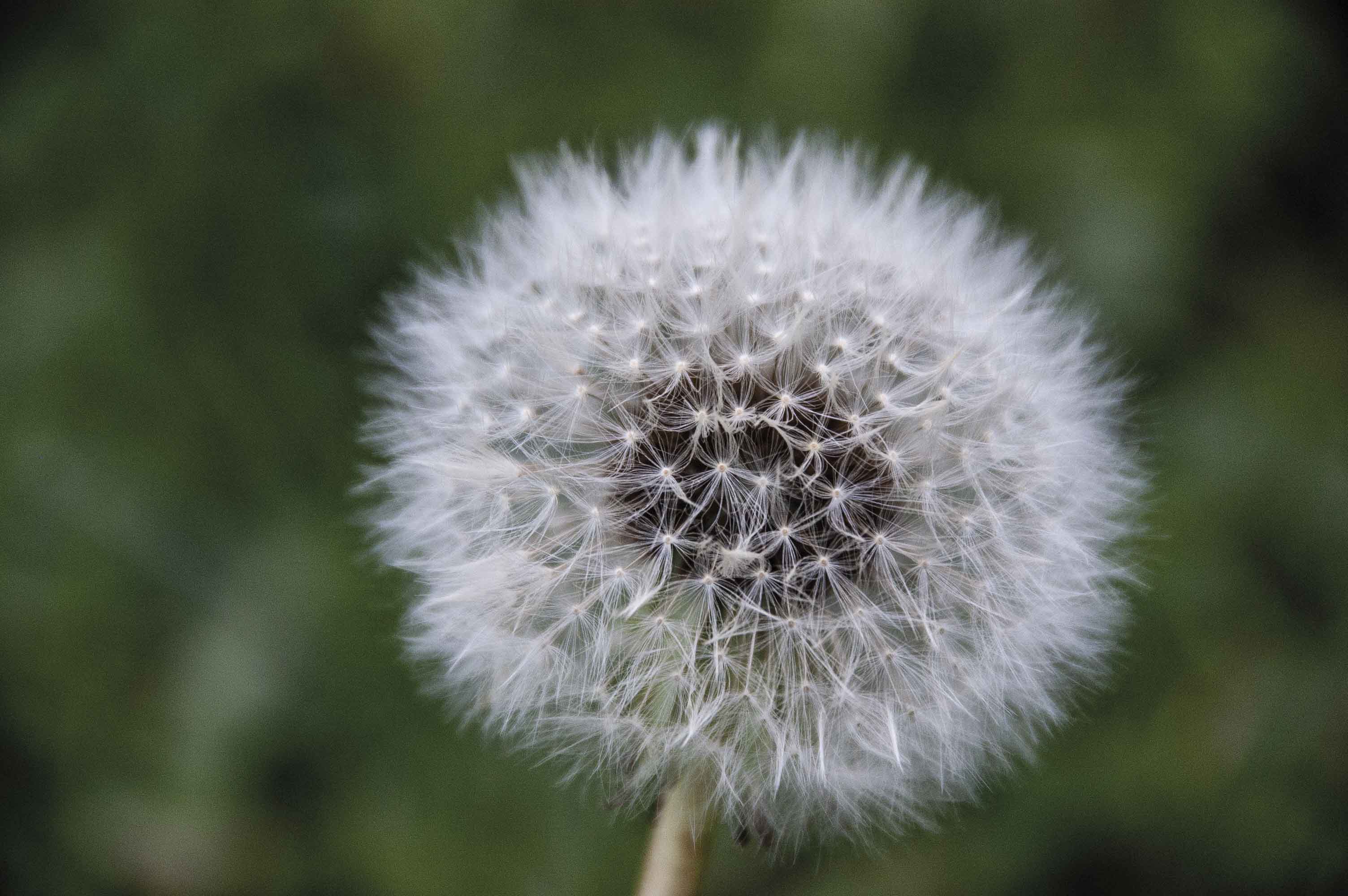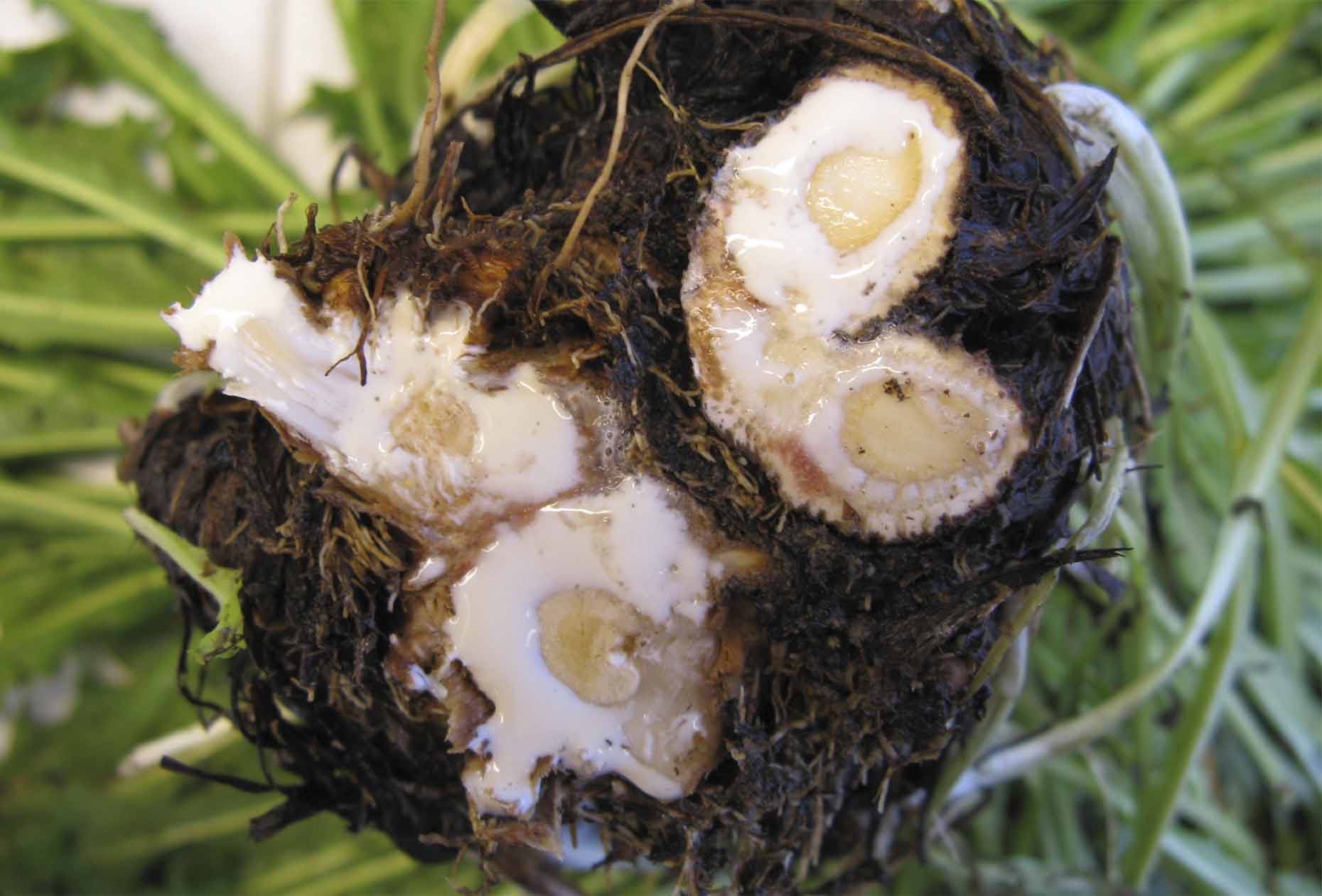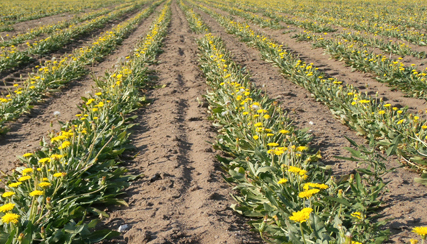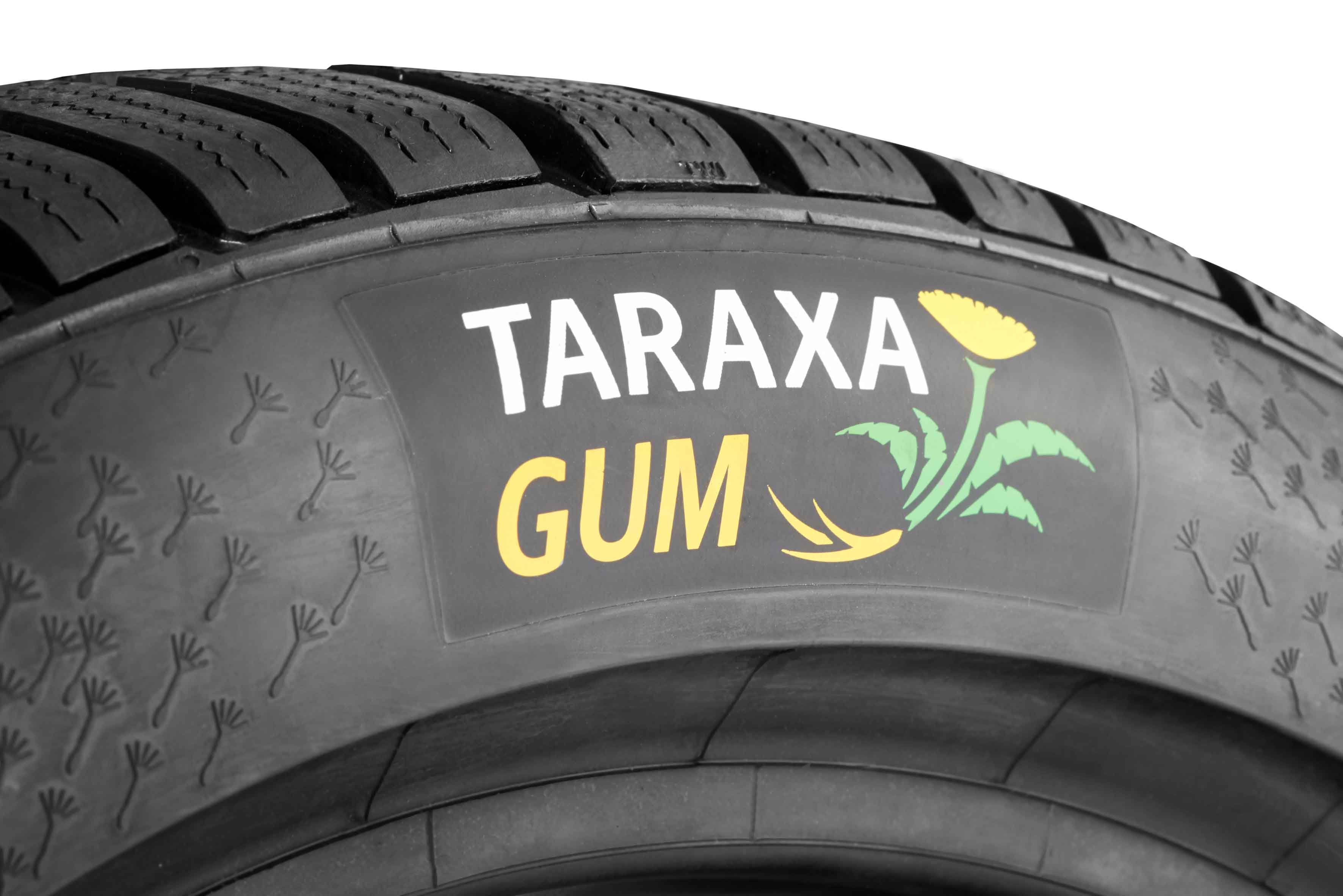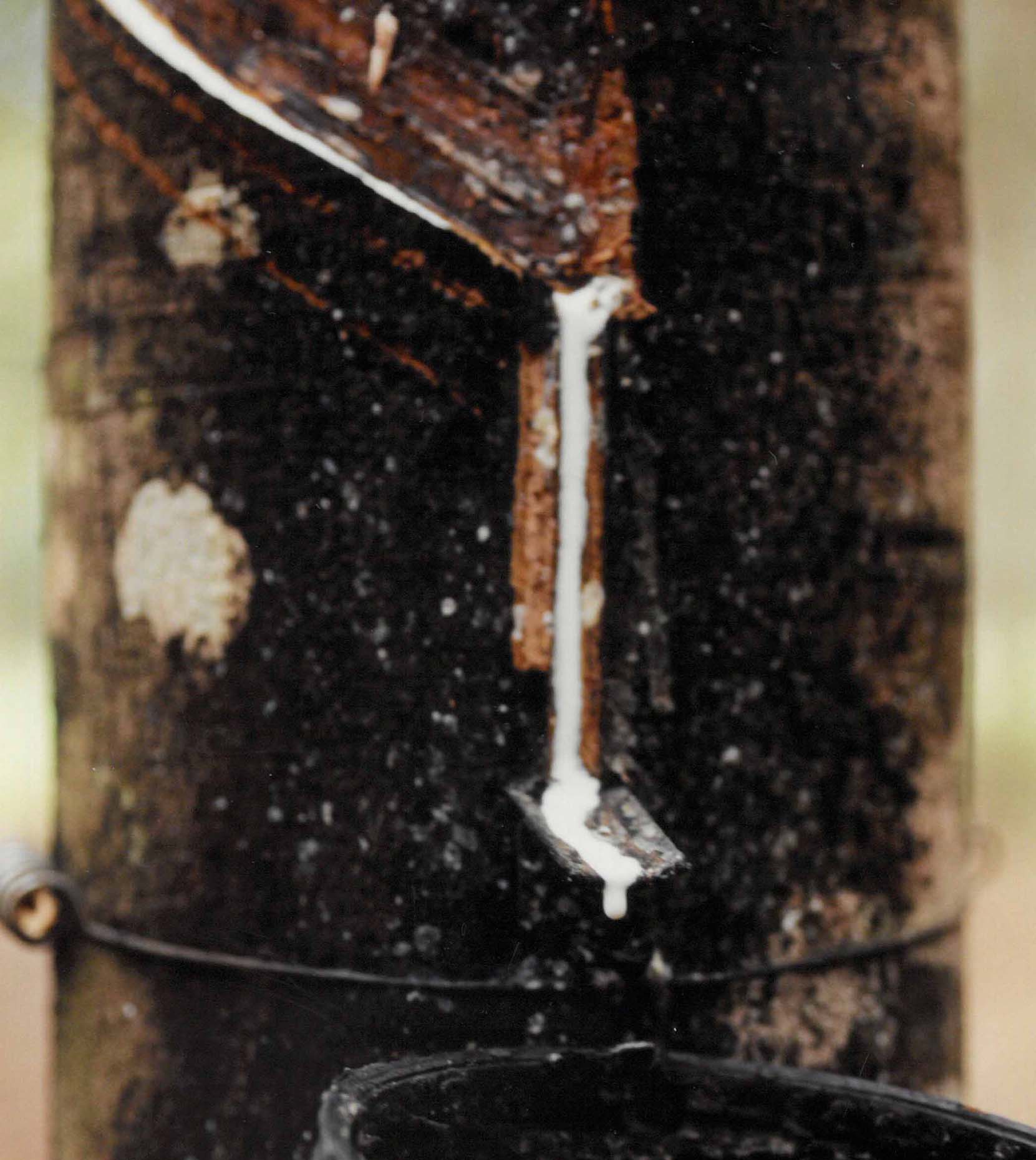
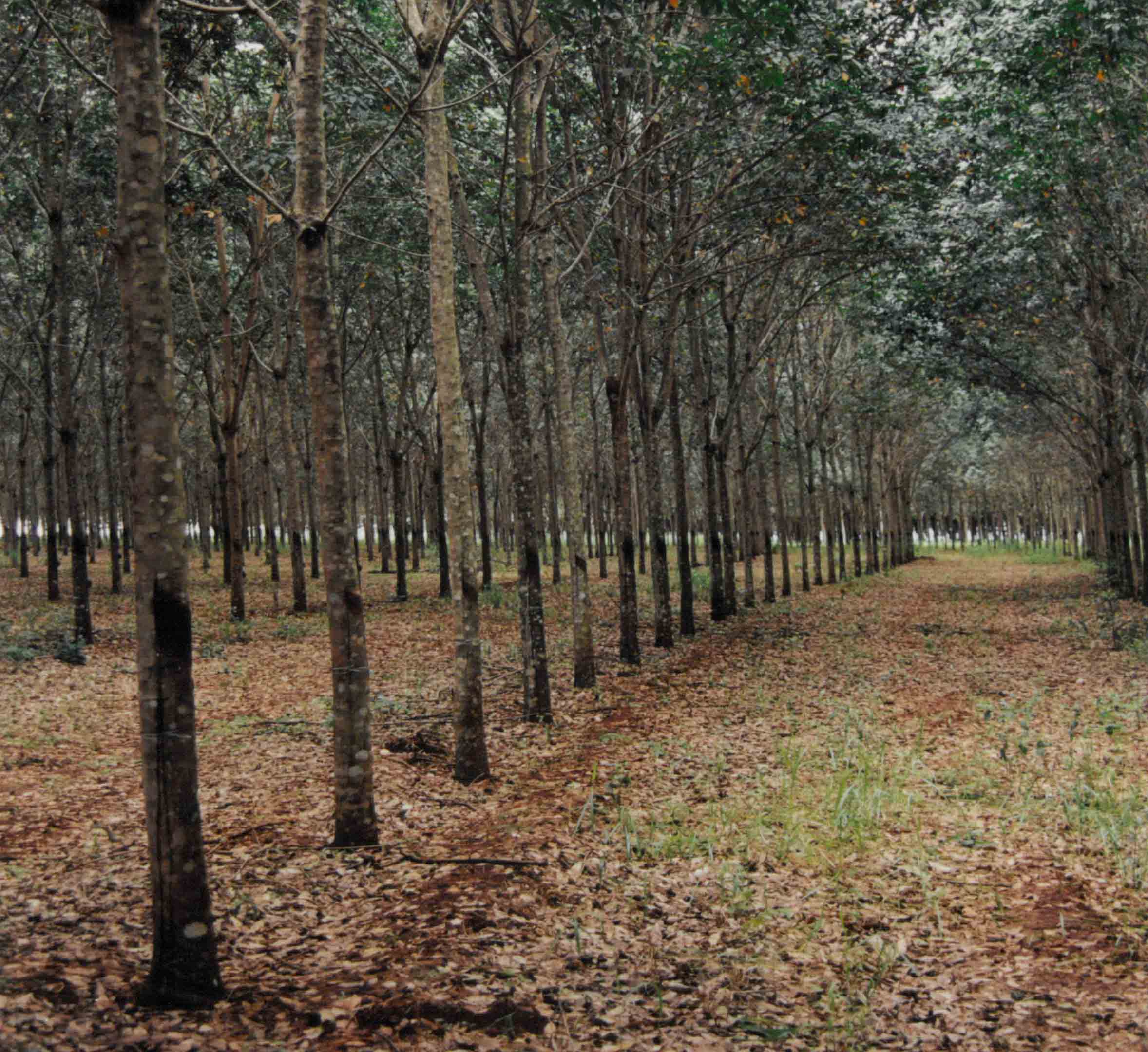
Rubber is the raw material for more than 50,000 different products, primarily for car tires, but also for seals, mattresses, shoe soles or condoms. Almost 14 million metric tons of natural rubber were produced in 2018 and processed through vulcanization into rubber, a material that is both strong and elastic even when cold.
Today, the raw material is extracted almost exclusively from the latex of a tree that is known botanically as Hevea brasiliensis. This tree is originally native to the tropical forests of Brazil, but its main cultivation areas today are in Southeast Asia. Since 2000, global natural rubber production has doubled from just under 7 million tons to 13.9 million tons in 2018. The intensive cultivation of rubber trees creates problems: use of large amounts of pesticides, the trees require a lot of water, which in some cases causes the water table to sink. Above all, however, the plantations need space. To create this space, large areas of tropical forest have been cleared in producing countries such as Thailand and Indonesia. Not only in its country of origin, Brazil, but also in the new cultivation areas, are the monocultures susceptible to disease infestation. In Brazil, the fungus Microcyclus ulei was a major contributor to the collapse of the rubber empire.
So far, plantations in Southeast Asia have been spared from this fungus, but experts suspect that this may change quickly with direct flight connections between Brazil and Southeast Asia. Indigenous fungi do affect the tree plantations in Asia: in October 2019, the Rubber Authority of Thailand reported that a key growing area in the south was being hit by a fungal disease that could halve the area's production. The disease is spreading rapidly, leaving trees bare and unable to be tapped. The fungus is also hampering the rubber harvest in neighboring Indonesia and Malaysia. According to the International Rubber Consortium, around 382,000 hectares of rubber plantations are currently affected.
Although petroleum-based synthetic rubber is available, it can only partially replace the natural product.
Because of all these factors, we urgently need to develop alternative, sustainable sources of natural rubber.
 Fraunhofer Institute for Molecular Biology and Applied Ecology IME
Fraunhofer Institute for Molecular Biology and Applied Ecology IME